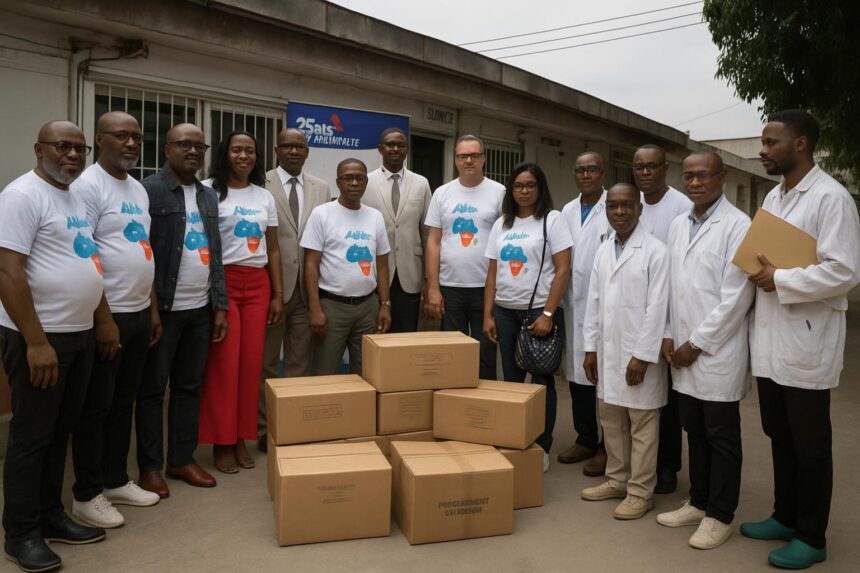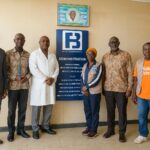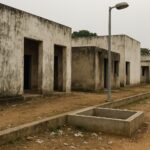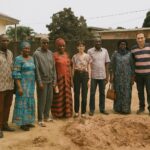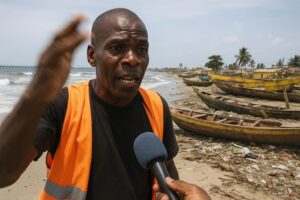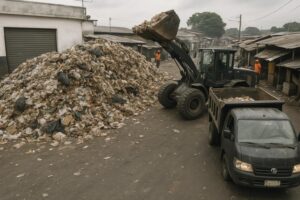Corporate solidarity strengthens blood supply
The cool morning air inside the National Blood Transfusion Centre in Brazzaville carries a new sense of relief. Two thousand five hundred double blood bags, emblazoned with the Africa Global Logistics logo, have just been wheeled into storage, expanding the centre’s capacity overnight.
- Corporate solidarity strengthens blood supply
- Inside A’Solidarity Day spirit
- Staff mobilisation in Pointe-Noire and Brazzaville
- CNTS welcomes timely support
- Long-term community benefits
- A careful alignment with national goals
- Employees turn donors into ambassadors
- Port city momentum spreads inland
- Counting the life-saving potential
- What happens next
AGL and its Congolese subsidiaries—AGL Congo, Congo Terminal and Terminaux du Bassin du Congo—formalised the hand-over this week. The material, worth several million CFA francs, is intended to stabilise collection campaigns across departments at a moment when post-pandemic stocks remain fragile, according to CNTS technicians.
Inside A’Solidarity Day spirit
The donation sets the tone for A’Solidarity Day, an annual event that unites the group’s 23,000 employees around one concrete community action. “We translate big values into small, measurable gestures,” explained Thierry Renard, regional director for AGL, during the brief ceremony.
Last year the same spirit materialised in bricks and paint. AGL teams built a protective perimeter wall and refreshed every classroom at the 5-February-1979 public school in Pointe-Noire, directly improving learning conditions for more than 3,500 pupils and teachers.
Staff mobilisation in Pointe-Noire and Brazzaville
For 2024, the challenge moves from construction sites to blood donation chairs. The logistics group aims to mobilise over 1,500 employees in its port and rail facilities for voluntary blood drives in Pointe-Noire first, then Brazzaville, before the end of July.
Internal WhatsApp groups already buzz with selfies of workers holding appointment cards. “Giving blood is simpler than moving a container,” joked crane operator Mireille Mabiala, who plans to donate alongside her entire shift during the next recess period.
CNTS welcomes timely support
Doctor Juste Mavoungou, head of external relations at CNTS, said the bags arrive at a critical juncture. “We need roughly 60,000 safe units every year to cover deliveries, surgeries and emergencies nationwide. Every new collection device shortens the wait for patients,” he stated.
Recent figures from the Ministry of Health place voluntary donation rates under 40 percent of requirements. Stock-outs are most visible around festive seasons and during malaria peaks, when paediatric transfusions surge. Extra double bags allow staff to separate plasma and red cells, maximising each donation.
Long-term community benefits
Beyond immediate stock boosts, public-private collaboration is expected to encourage a culture of regular giving. Communication students from Marien Ngouabi University have been invited to shoot 60-second clips inside AGL’s depots, showing first-time donors and sharing them on TikTok and Instagram.
Local NGO Action Sauver la Vie applauds the initiative. Its coordinator, Armelle Tchicaya, believes corporate challenges influence younger audiences more than traditional TV appeals. “If dockworkers can pause their day to save lives, campus crowds will follow,” she said near the CNTS mobile unit parked on Avenue de la Paix.
A careful alignment with national goals
Congo’s National Development Plan stresses stronger partnerships with responsible industry to reinforce health infrastructure. By supplying certified consumables rather than cash, AGL ensures traceability and aligns with regulations introduced in 2022 that tighten oversight of transfusion material.
Government officials attending the event highlighted the synergy. A representative from the Health Ministry praised the company’s “concrete patriotism” and expressed hope that other port operators would replicate the model, particularly in the northern departments where collection remains sporadic.
Employees turn donors into ambassadors
Human resources teams inside AGL view the campaign as an internal wellness tool. Each participant completes a quick health screening, receives nutrition advice and attends short sessions on preventing non-communicable diseases. The company believes healthier employees become vocal ambassadors for safety on and off the job.
Warehouse supervisor Alain Makosso summed up the mood: “I joined for the free check-up, I stayed because I learned my blood could help three people. That knowledge changes how you see yourself.”
Port city momentum spreads inland
Campaign organisers chose to start in Pointe-Noire because port shifts make large gatherings easier. Once momentum builds, mobile teams will travel along rail corridors toward Dolisie and Nkayi, mirroring AGL’s freight routes and letting rural residents benefit from the same logistics expertise that moves cargo.
Each stop combines blood drives with road-safety workshops and free helmet distribution for motor-taxi riders, stitching together health and mobility concerns under one branded canopy.
Counting the life-saving potential
A single double bag allows technicians to fractionate a donation into red cells, plasma and platelets. CNTS estimates that 2,500 such kits could ultimately benefit up to 7,500 patients if collections meet quality standards. Mothers in labour, accident victims and children with severe anaemia stand first in line.
The prospect excites midwife Eugénie Nkounkou at the Makelekele hospital maternity: “Every time we avoid telling a family to buy blood on the private market, we lighten their financial burden and secure a safer transfusion.”
What happens next
Over the coming weeks, AGL will share collection data with CNTS to fine-tune scheduling. Early indicators, such as donor attendance and haemoglobin acceptance rates, will be published internally to encourage friendly competition between terminal teams.
The public will see the impact more quietly: shorter delays for transfusions, fewer calls for urgent donors on community radio, and, officials hope, a growing habit of voluntary donation that survives well beyond this year’s A’Solidarity Day.

